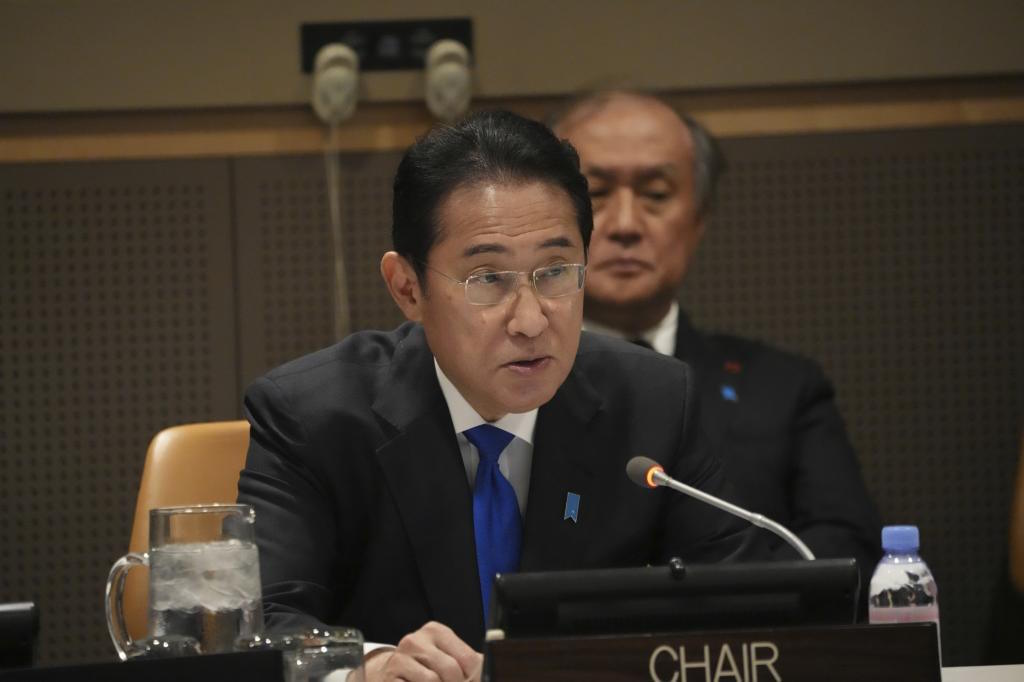The vote is limited to the long-ruling Liberal Democratic Party's parliamentarians and dues-paying members. Because the party's governing coalition dominates parliament, the winner is assured to be Japan's next prime minister.
A record nine lawmakers, including two women, are vying for the job in an unpredictable race.
The winner must quickly regain public trust, or Japan could face a return to a damaging cycle of short-lived governments, experts say.
The vote is limited to LDP lawmakers and 1.1 million grassroots members. That's less than 1% of the country's eligible voters.
No candidate is expected to win a majority in the first round of voting because of split votes, so the winner will probably be determined in a runoff between the top two vote-getters.
LDP leadership votes used to be determined by the party's powerful faction leaders, but experts say that may change this time because all but one of the six factions has announced their dissolution following the party's corruption scandals.
The vote is crucial for the LDP, which is looking for a leader who can revive public support for the party after scandals that hurt Kishida's popularity.
Experts say this election could mark a return to an era similar to the early 2000s, when "revolving door" leadership changes and political instability ended only with former Prime Minister Shinzo Abe' s eight-year reign.
This is because the new leader will lack stable backing by powerful factions.
Kishida's three-year leadership stint followed Yoshihide Suga, who had one year in power before he was forced to resign over his unpopular handling of the COVID-19 pandemic.
Frequent government changes make it difficult for Japanese leaders to tackle long-term policy goals or develop trusted relations with other leaders. Japan's diplomatic and security policies, though, will continue to be based on its key alliance with the United States.
With less influence from factions, the prime minister can exercise more power, but stability depends on support ratings, said Yu Uchiyama, University of Tokyo politics professor. The question is whether the next prime minister can decisively carry out political reform. A new leader will also have to deal with soaring military, child care and climate change costs, he said.
The most damaging scandal centers on the failure of dozens of the party's most influential members to report political donations. That led to the indictment of several lawmakers, their aides and accountants. Kishida's party has tightened political funds laws and conducted an internal investigation, but critics say the measures weren't enough.
"I foresee a continued stagnation in the political situation, with the LDP repeatedly changing faces," said Chiyako Sato, a political editorial writer for the Mainichi newspaper.
All nine candidates are incumbent or former Cabinet ministers.
Shigeru Ishiba, a former defense minister, has steadily ranked No. 1 in media surveys. Environment Minister Shinjiro Koizumi, the son of a former popular prime minister, Junichiro Koizumi, is behind Ishiba. Economic Security Minister Sanae Takaichi, an Abe protege and staunch conservative who ran against Kishida in 2021, is third by a narrow margin.
Experts say two of the three are expected to advance to a runoff. But it's difficult to predict a winner, because a runoff could be influenced by backroom dealing among party heavyweights.
Takaichi and Foreign Minister Yoko Kamikawa are seeking to become Japan's first female leader.
That, however, is largely in the hands of senior male veterans like former Prime Ministers Taro Aso, Suga and Kishida.
Of the two women, Takaichi ranks higher in media surveys than Kamikawa. She has ties to Abe faction members, including those implicated in the slush funds scandal, and her conservative support for paternalistic traditions are criticized by some as bad for women's advancement.
Kamikawa is seen as a safe choice by some. She has said that just being able to enter the race has demonstrated a new LDP.
Women make up only 10.3% of Japan's lower house of parliament. That makes the country 163rd for female representation among 190 countries examined in an April report by the Geneva-based Inter-Parliamentary Union.
In Japan's largely paternalistic culture, it's still normal for sons to inherit political power from their fathers, often limiting opportunity for women from nonpolitical families to run. The nine candidates include five male hereditary politicians.
On Oct. 1, Kishida and his Cabinet ministers will resign. The new leader, after a parliamentary endorsement, will then form a new Cabinet later in the day.
While the current term for the lower house lasts until October 2025, most candidates say they'll hold an early election soon after taking office. Observers expect an election within weeks, so the new prime minister can try to capitalize on a fresh image.
The main opposition — the liberal-leaning Constitutional Democratic Party of Japan — has scored some wins in local elections this year. That was helped by LDP scandals. But the party has since struggled to build momentum.
The CPDJ on Monday chose former Prime Minister Yoshihiko Noda as leader. That's a conservative shift likely meant to grab swing voters and LDP supporters disgusted by the scandals.
Political watchers say the opposition is too fractured to attract voters who want to punish the LDP, and there's skepticism that the opposition parties are viable alternatives.
At an LDP candidates' campaign event in Tokyo, party member Shohei Tsunoda, 72, said: "It would be good if we could have a system like in America, where two parties compete and take turns in power. But right now, the CPDJ doesn't seem to have that kind of strength."
